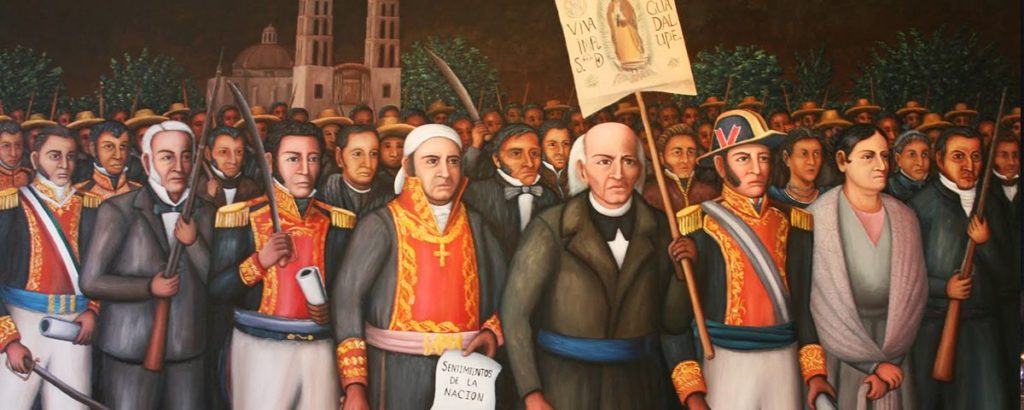September 16th is Mexico’s Independence Day!
Many people in the world mistakenly think that May 5th or Cinco de Mayo is Mexico’s Independence Day, but the country’s national holiday actually falls on September 16th. Cinco de Mayo commemorates the victory of the Mexican militia over the French army in 1862.
El Grito de la Independencia (The Cry of Independence)
El Grito de la Independencia (Cry of Independence) is held annually on September 16th in honor of Mexico’s declaration of independence from Spanish rule in 1810.
Miguel Hidalgo y Costilla, or simply Miguel Hidalgo, was a Mexican priest and a leader in the Mexican War of Independence. He is depicted in a painting by Jose Clemente.
In the early hours of September 16, 1810, Miguel Hidalgo y Costilla, a priest in the small town of Dolores, Guanajuato, rang the church bell to gather the townspeople. He called for the people of Mexico to rise up against the Spanish crown, thus initiating Mexico’s War of Independence.
This event, known as the Grito de Dolores (Cry of Dolores) or El Grito de la Independencia (Cry of Independence), is commemorated every year in town squares across Mexico. The country did not achieve independence until 1821. What caused the revolt?
Revolt Against the “Caste System”
Of course, the indigenous people were the first to inhabit what is now known as Mexico. In 1521, about 500 Spanish soldiers arrived, headed by Hernán Cortés, thus beginning three centuries of Spanish rule. The new Viceroyalty (a territory with a local ruler appointed by the King) was named Nueva España, “New Spain.”
During the colonial period, the Spanish developed a complex caste system based on race, that was used for social control, and that also determined a person’s importance and privilege in society. There were four main categories of race in New Spain: (1) Peninsular, a Spaniard born in Spain; (2) Criollo (feminine, Criolla), a person of Spanish descent born in the New World; (3) Indio (feminine India), a descendant of the original inhabitants of the Americas; and (4) Negro (feminine Negra), a person of black African descent, usually an enslaved person or a free descendant of one. Persons of mixed race were collectively referred to as “castas” or “mestizos“.
The revolt was against the Spanish caste system, which was used for social control and economic privilege.
General groupings of “castas” had their own set of privileges or restrictions. The privileged were the Peninsular Spaniards. Discontent steadily grew, especially amongst the Criollos, who were always treated as second-class subjects of the Spanish crown. It is no surprise then, that Criollos were the spark that ignited the independence movement and the fight for human rights.
Miguel Hidalgo formally denounced the observance of the caste system in 1810, and people of all races were able to see that putting up a fight for their independence was worth it.
No Free Trade
The vast Spanish New World Empire produced many goods, including coffee, cacao, textiles, wine, minerals, and more. But, the Viceroyalties were only allowed to trade with Spain, and at rates advantageous for Spanish merchants. Local merchants in New Spain took to selling their goods illegally to British and American traders. Spain was eventually forced to loosen some trade restrictions, but the move was too little too late as those who produced these goods demanded a fair price for them.
Napoleon Invades Spain
In 1808, Napoleon invaded Spain and decided to impose his brother, José Bonaparte, as the King of Spain (1808-1810). The Criollos of New Spain found in this circumstance the opportunity to seek their independence. The chaos in Spain made the perfect excuse to rebel and yet not commit treason: many said they were loyal to Spain, not to Napoleon.
Influence of Other Revolutions
By 1810, Spanish America could look to other nations to see revolutions and their results. The American Revolution was seen by many in the Americas as a good example of throwing off European rule and replacing it with a more fair and democratic society, even though slavery in the USA continued to exist. This difference in ideology would cause friction between the two countries in the future.
Here is a copy of the Constitution of Mexico in English: Mexican Constitution
Watch this video (English) about the story.
Related Article:




